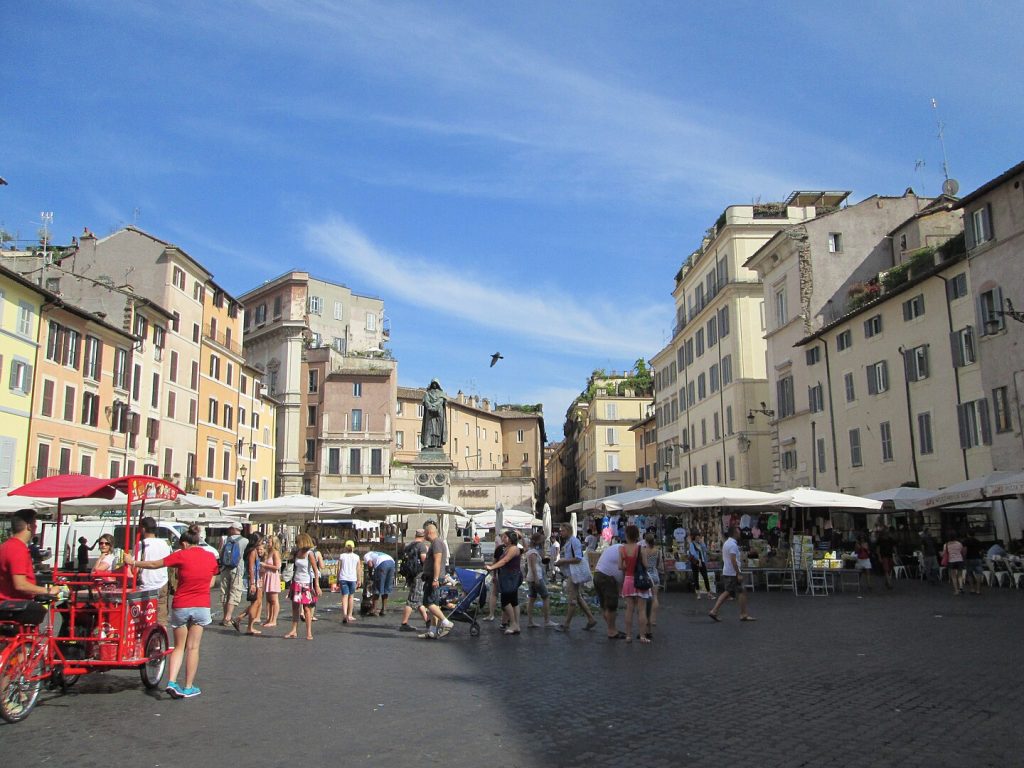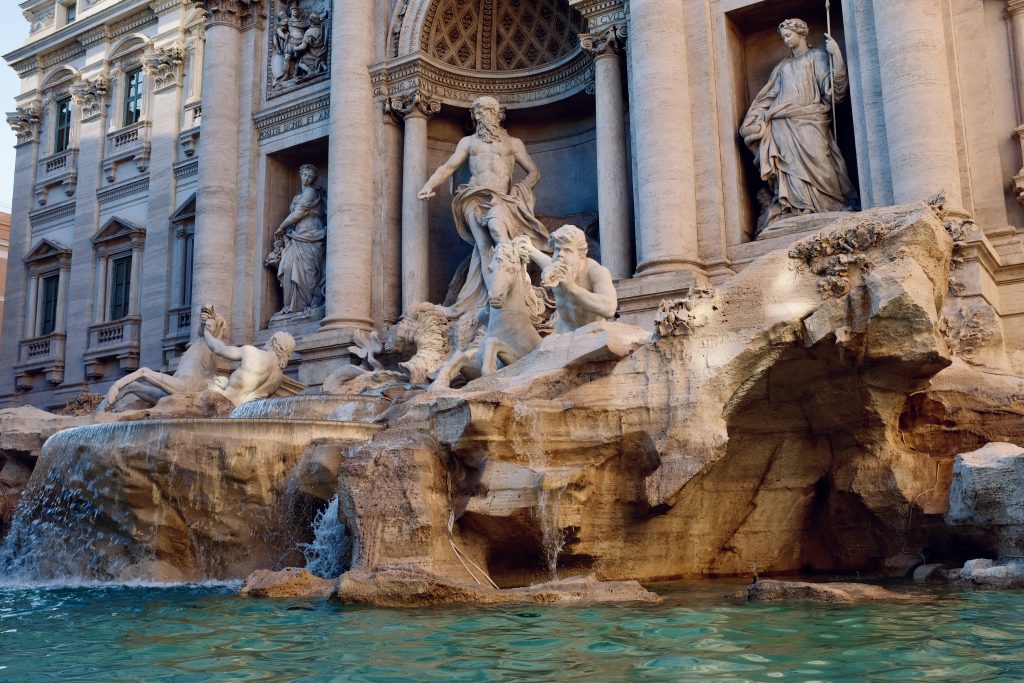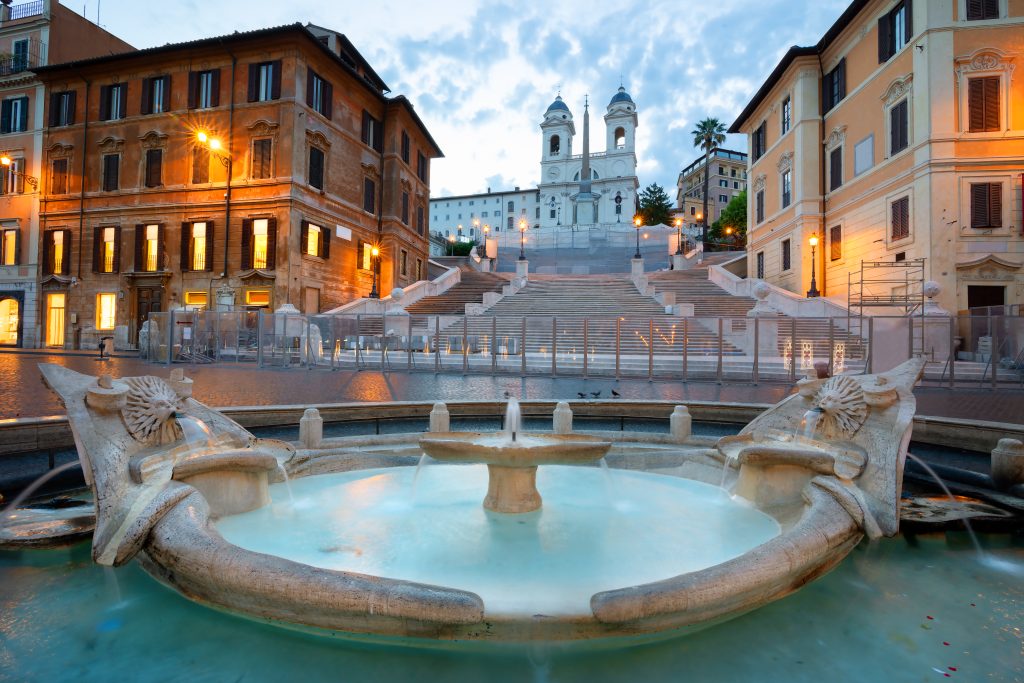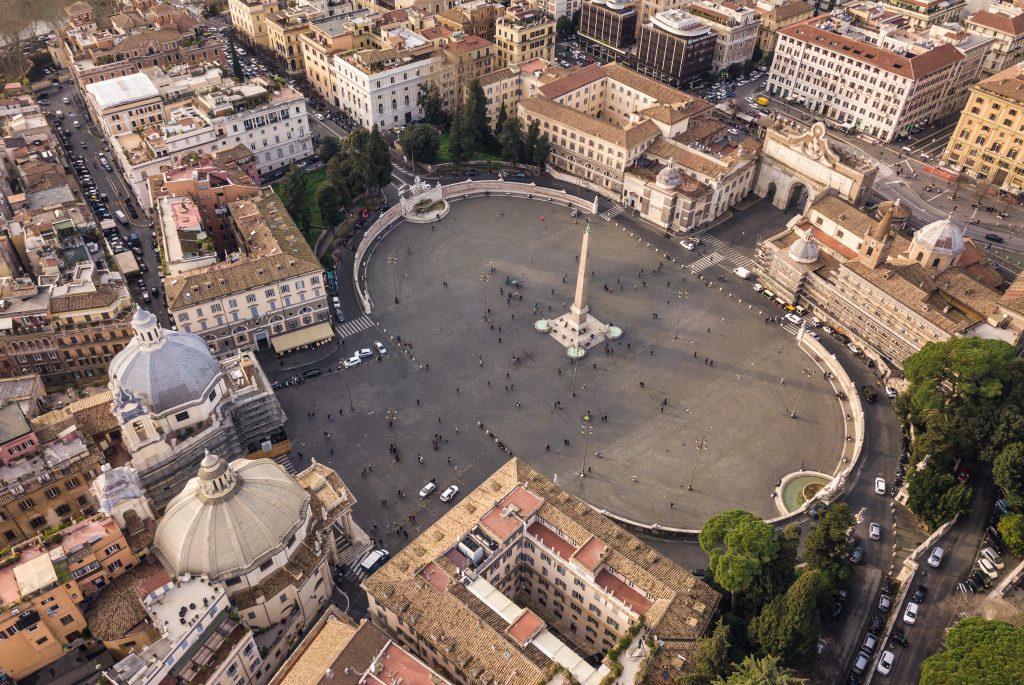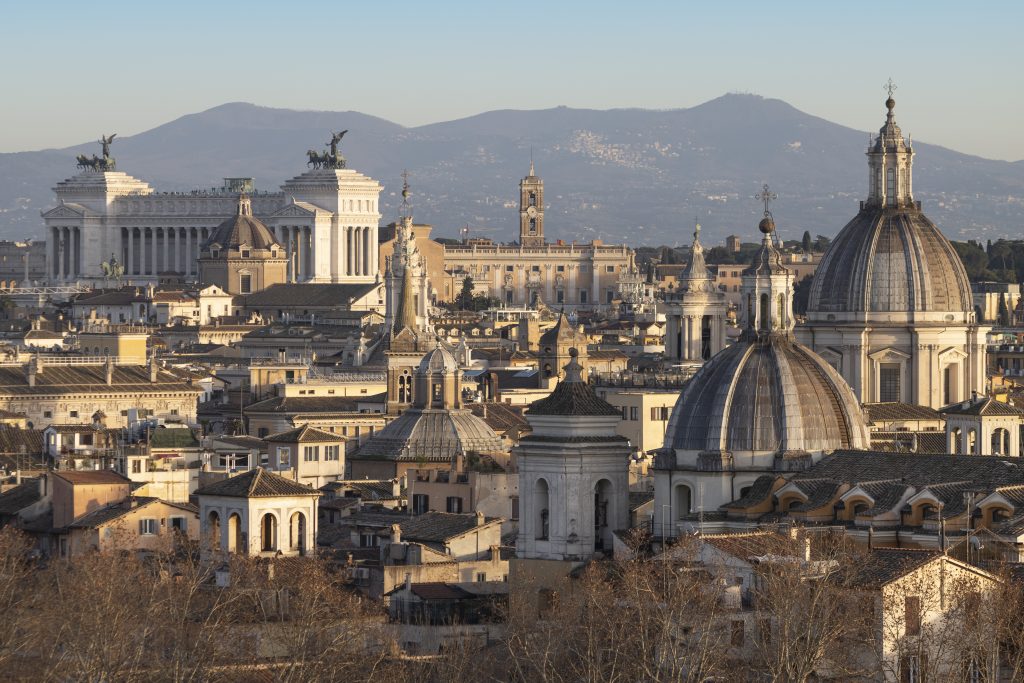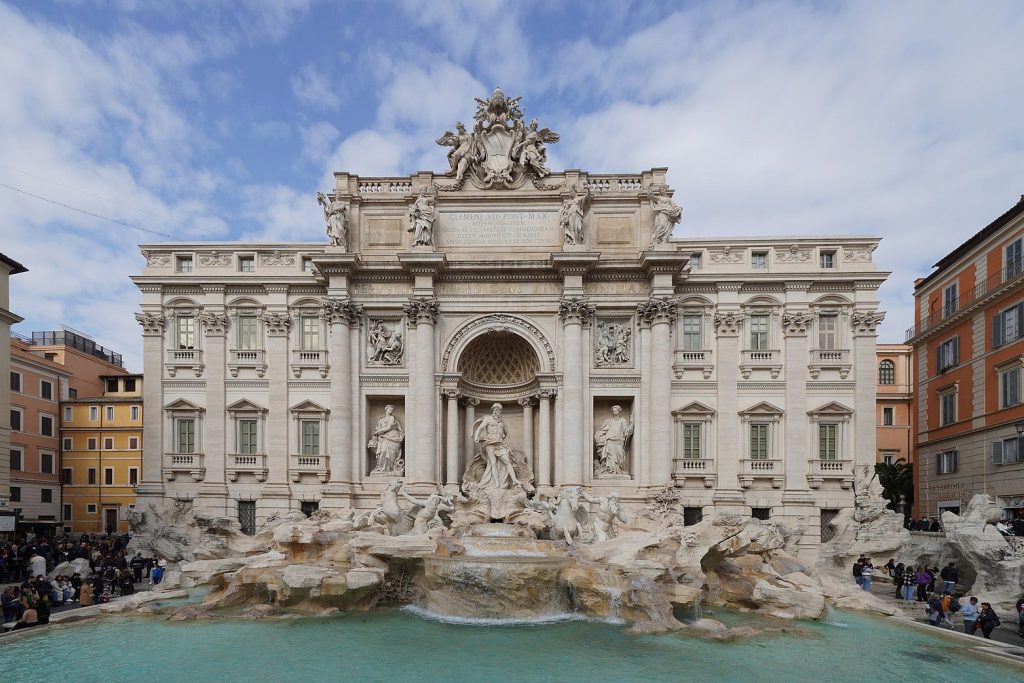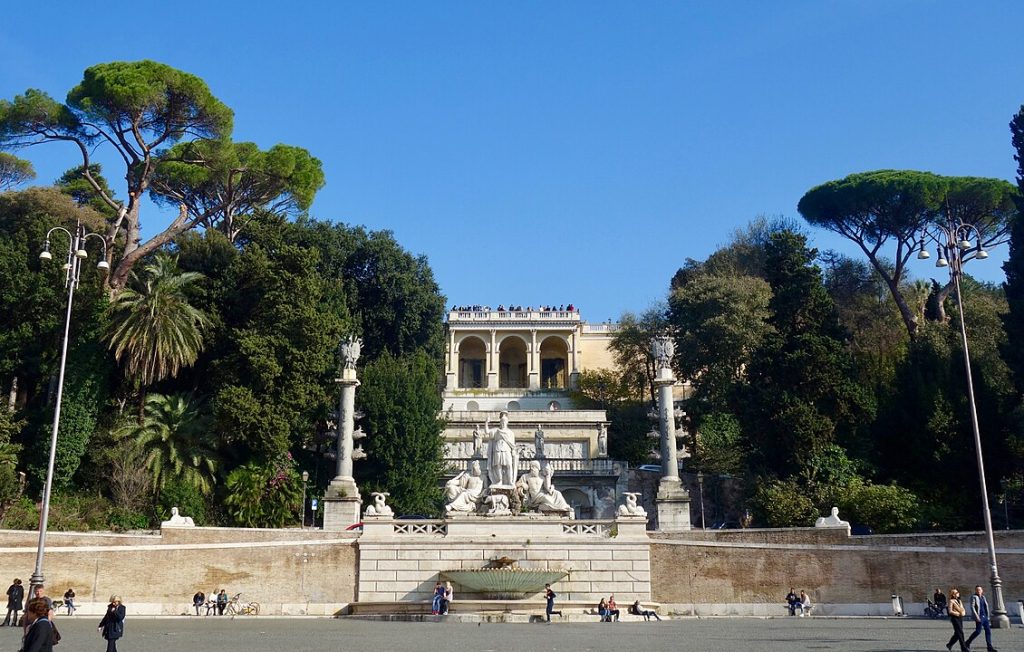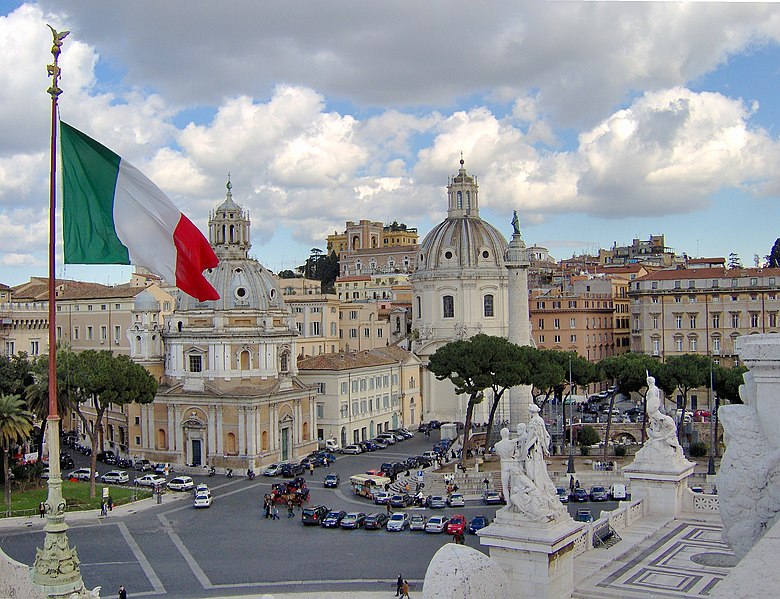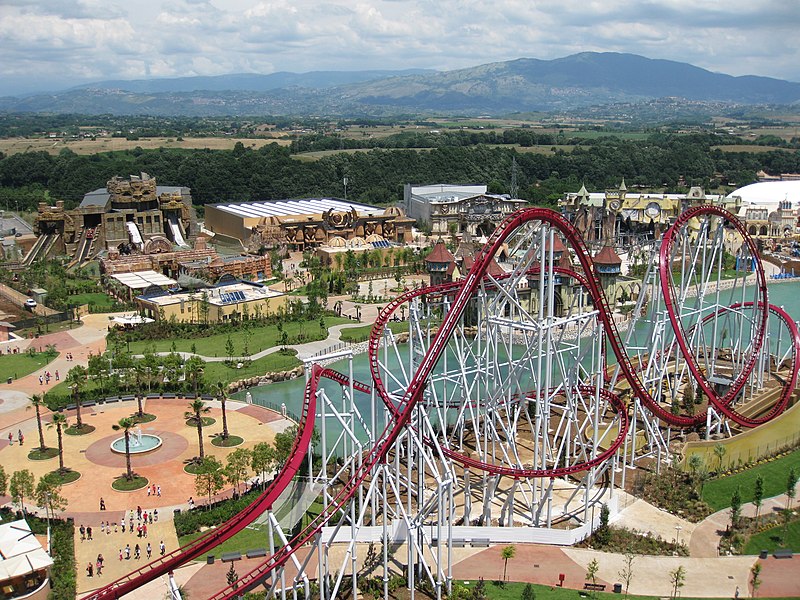- 1️⃣ Introduction - the heart of Baroque Rome
- 2️⃣ History of Piazza Navona - from stadium to baroque masterpiece
- 3️⃣ Fountain of the Four Rivers - Bernini's masterpiece full of symbols
- 4️⃣ Other fountains and sculptures - Neptune and the Moor in Baroque relief
- 5️⃣ Church of Sant'Agnese in Agone - an architectural gem of the Baroque era
- 6️⃣ Piazza Navona today - a vibrant meeting place
- 7️⃣ Cafes, restaurants and street artists - the taste and art of Piazza Navona
- 8️⃣ Events and fairs - the magic of Christmas and summer evenings
- 9️⃣ Curiosities and hidden symbols of the square - Piazza Navona from a different perspective
- 🔟 How to get to Piazza Navona - practical tips for visitors
- 1️⃣1️⃣ Summary - why Piazza Navona has delighted consistently for centuries
- 📍 Attractions in the area
- 🔗 Articles similar in subject matter
- 🔥 Most popular articles in the last week
- 💬 Opinions
1️⃣ Introduction - the heart of Baroque Rome
✨ Looking for the most romantic place in Rome?
👉 See the Trevi Fountain - a gem of Baroque architecture
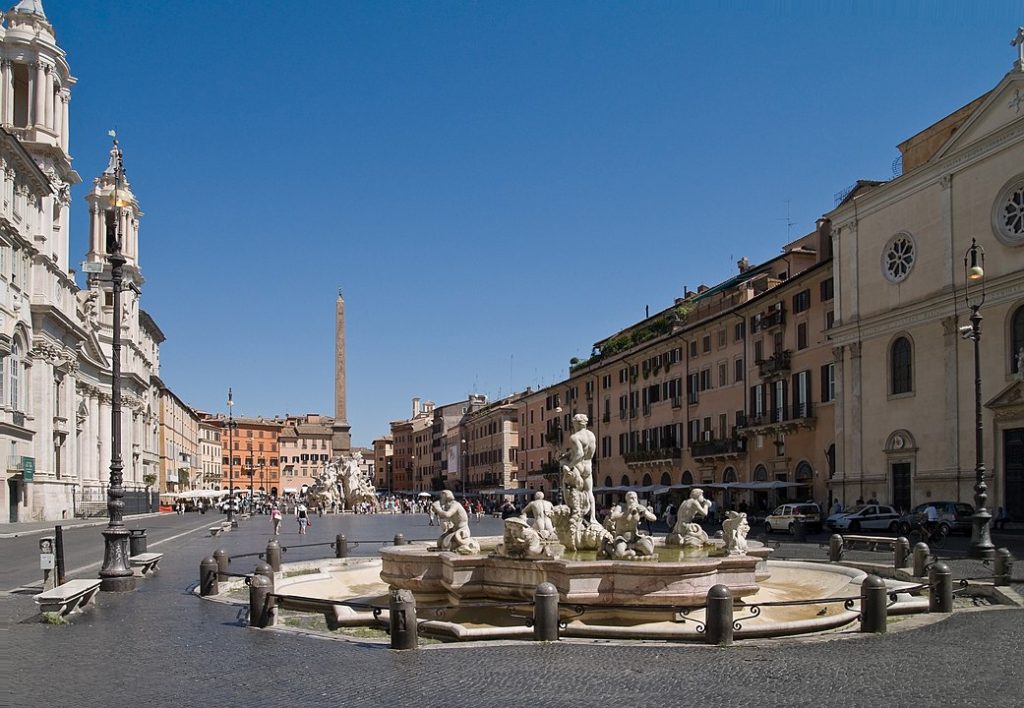
Piazza Navona is one of those places that from the first moment delight with their atmosphere, harmony and history. Located in the heart of Rome, the square is a true masterpiece of the baroque, in which architecture, art and daily life create a unique mosaic of experiences. Surrounded by elegant palaces, adorned with impressive fountains and enlivened by the street artists, Piazza Navona attracts both tourists from all over the world, as well as residents of the Eternal City.
It is not only a popular tourist attraction, but more importantly a symbol of the Roman way of life - places where history meets the present, and every moment takes on unique charm. Walking around the square, it's hard to resist the impression that the time stopped for a moment, allowing us to savor the beauty and atmosphere of one of the the most beautiful corners of Rome.
2️⃣ History of Piazza Navona - from stadium to baroque masterpiece
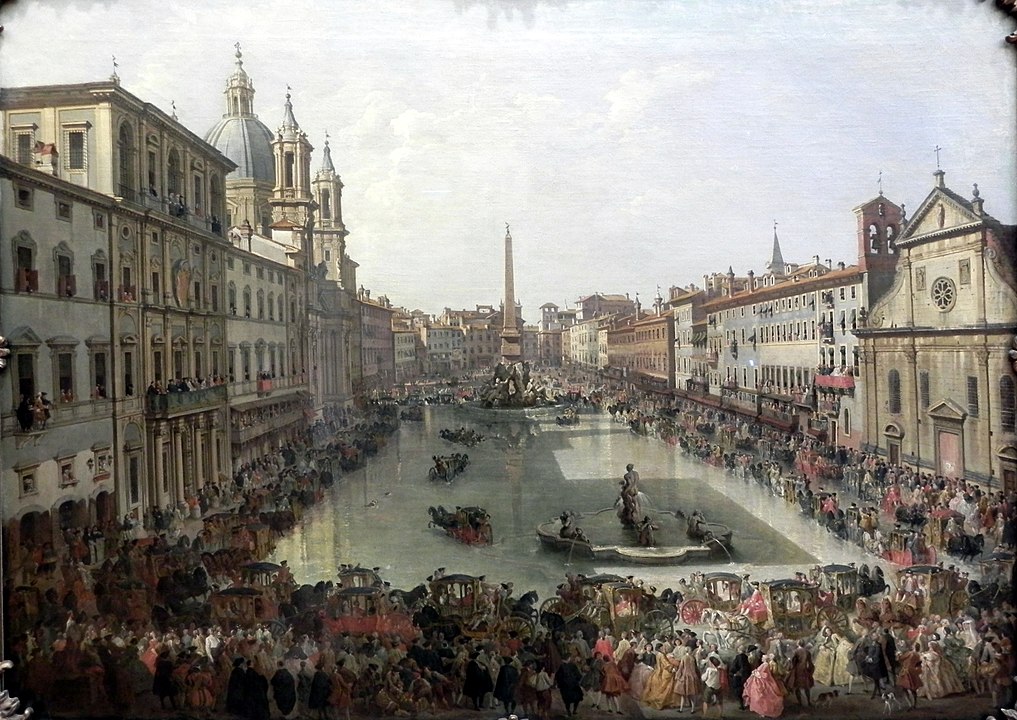
Piazza Navona is a square that for centuries was changing its face, while retaining its unique, elongated shape. Few tourists realize that by walking on its cobblestone pavement, they are actually strolling through a place of the former ancient stadium.
💠 From Domitian's Stadium to the square
The history of the square dates back to 1st century AD., when the emperor Domitian ordered to build a stadium for athletic competitions at the site -. Stadio di Domiziano. It could accommodate about 30,000 spectators and was the first facility of its kind in Rome dedicated exclusively to sports. Although the stadium itself fell into disrepair over time, its shape has survived and is clearly visible in the layout of today's square.
💠 Transformation into a baroque city center
W 17th century, thanks to Pope Innocent X and influential Pamphilj families, the square underwent a huge metamorphosis. It was then that monumental fountains were created, as well as the Church of Sant'Agnese in Agone - All in the spirit of the Roman Baroque. The design and artistic work was entrusted to the greatest masters of the era: Gian Lorenzo Bernini i Francesco Borromini.
💠 Legacy of the past
To this day Piazza Navona combines ancient foundations with Baroque splendor. Its remarkable history - from sports arena each Rome's most picturesque sites - Makes walking through it a literal feel the spirit of bygone eras. The square is a living testimony of the changesThe history of the Eternal City has undergone over the centuries.
3️⃣ Fountain of the Four Rivers - Bernini's masterpiece full of symbols
🏞 Do you love atmospheric plazas and unhurried walks?
👉 The 5 most beautiful squares of Rome - this is where you'll stay for longer
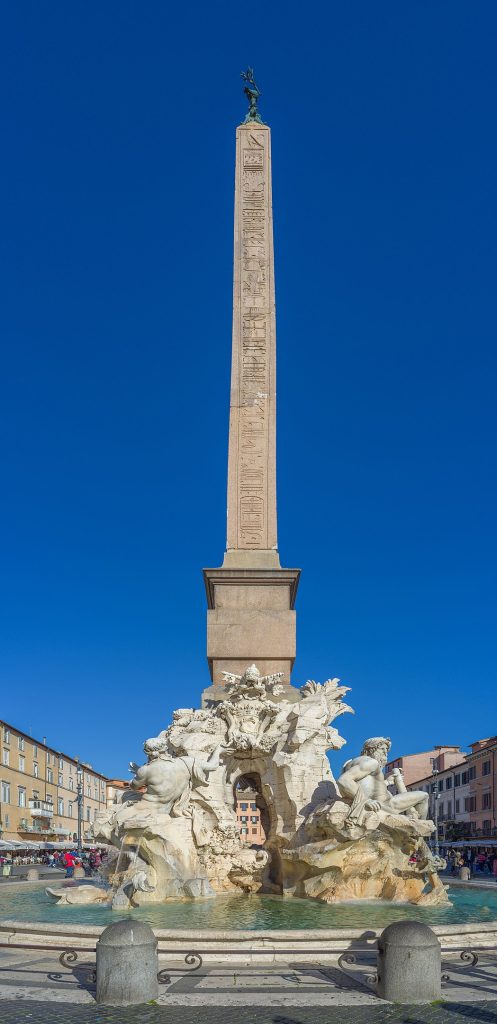
In the heart of Piazza Navona is one of the the most impressive works of baroque art - Fountain of the Four Rivers (Fontana dei Quattro Fiumi), designed by Gian Lorenzo Bernini in 1651. It is not only an ornament of the square, but also a meaningful allegory of the power of the Church and the four continents known in the 17th century.
💠 Symbolism of rivers and continents
The fountain depicts four monumental figures symbolizing the largest rivers in the world at the time:
- Nile (Africa) - with his head veiled to symbolize the then unknown sources of the river,
- Ganges (Asia) - epitomizing dignity and accessibility for shipping,
- Danube (Europe) - closest to Rome, indicating a connection to the Church,
- Rio de la Plata (America) - depicted with coins, as a reference to the wealth of the New World.
Each character is dynamic, expressive and surrounded by the local flora and fauna of the continent - from crocodile to lion and palm trees.
💠 Obelisk and architecture
The focal point of the fountain is tall egyptian obelisk, which Bernini placed on a rocky base, giving the impression of floating in the air. It's a masterful illusionist trick that was meant to amaze and awe - and it still successfully catches the eye of visitors today.
💠 Rivalry with Borromini?
Legend has it that Bernini designed the figures to showed resentment towards the nearby church of Sant'Agnese in Agone, by his rival Francesco Borromini. In reality, however, the church was built later, so the anecdote is more of a humorous symbol of the artistic rivalry between the two Baroque masters.
4️⃣ Other fountains and sculptures - Neptune and the Moor in Baroque relief
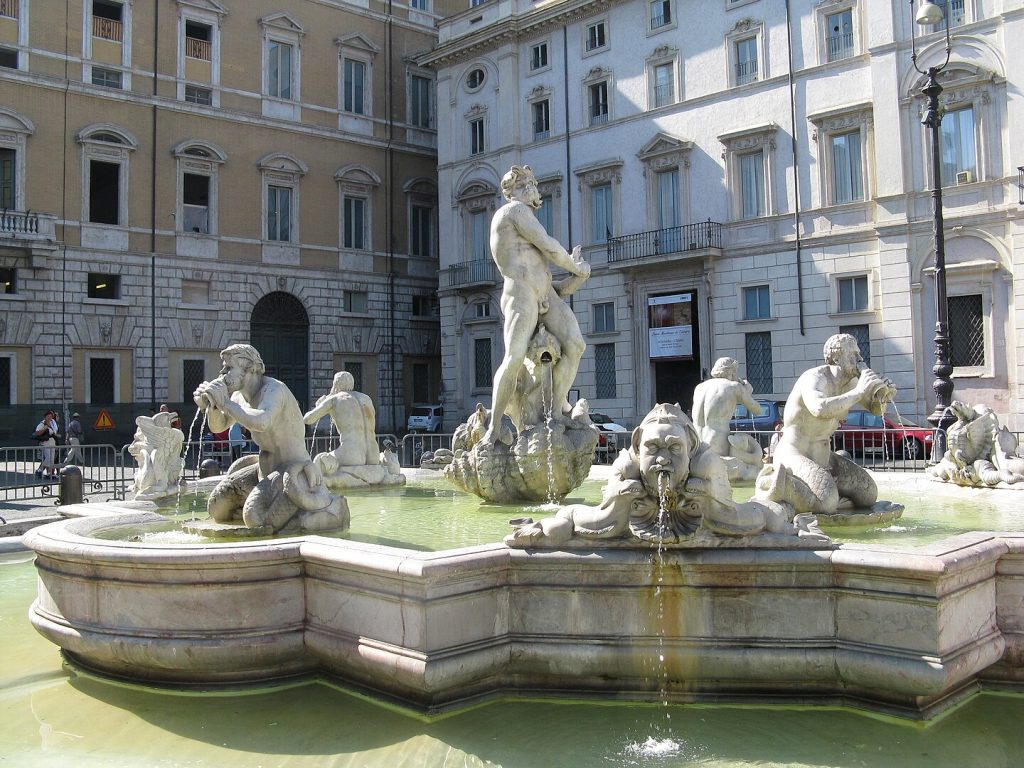
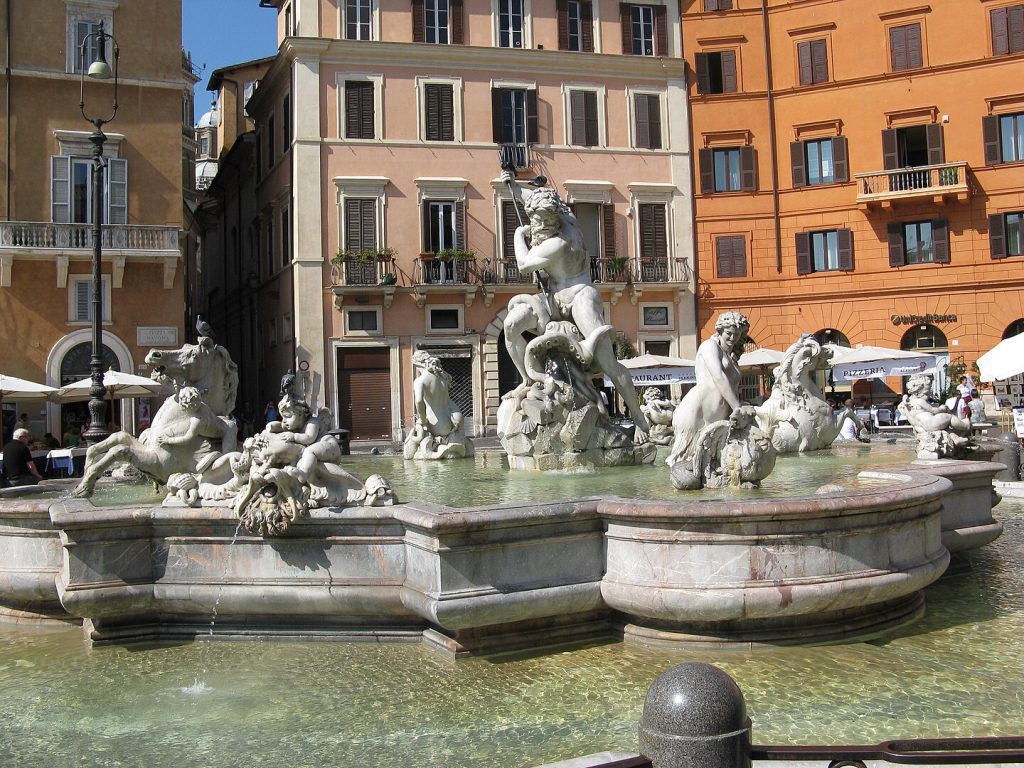
Although Fountain of the Four Rivers is undoubtedly the most important work of the Piazza Navona, it is also worth noting the two other fountains, which complete the composition of the square and create its unique atmosphere. They are located at two opposite ends of the square and also have a Baroque character.
💠 Fountain of Neptune (Fontana del Nettuno)
Located at the northern end of the square, this fountain was originally designed in the 16th century by the Giacomo della Porta, but for a long time it remained unfinished and lacked a central element. It was not until the 19th century that a central sculpture was added, depicting a Neptune fighting a sea monster, by Antonio della Bitta. Surrounded by mermaids, tritons and sea creatures, the sea god looks dynamic and powerful - perfectly in keeping with the mythological character of the fountain.
💠 Fountain of Maura (Fontana del Moro)
Located on the south side of the square, the fountain was also designed by Giacomo della Porta, and it gets its name from the main character -. Moor fighting a dolphin. The central figure was later redesigned by himself Bernini, which gave it more expression and drama. The surrounding tritons and water masks add dynamism and theatricality to the whole composition.
💠 Harmony of three fountains
All three fountains of Piazza Navona - Neptune, Mauro and the Four Rivers - form a coherent Baroque narrative that makes this square one of the Rome's most beautiful urban settings. Each of them tells a different story, but together they build One of the most photogenic and symbolic spaces in the entire city.
5️⃣ Church of Sant'Agnese in Agone - an architectural gem of the Baroque era
🌇 Want to see Rome from a completely different perspective?
👉 Viewing terraces - panoramas that will take your breath away
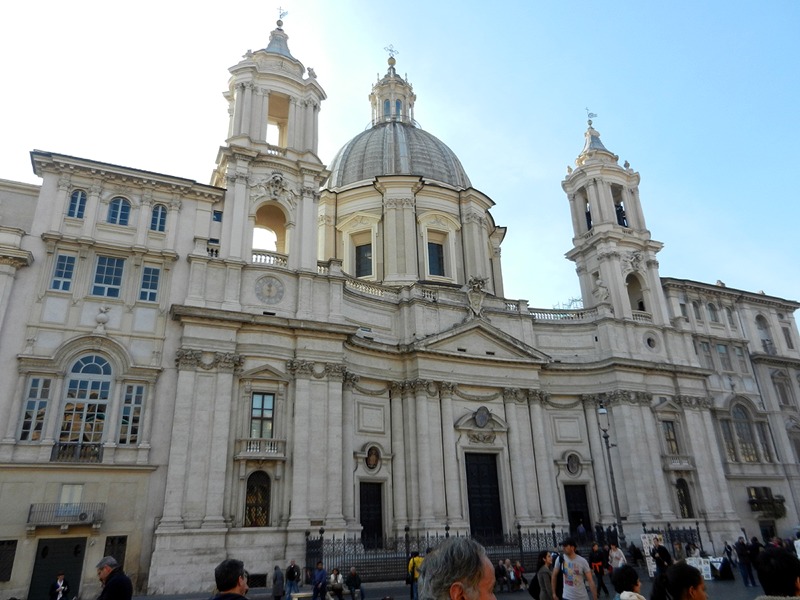
On the western frontage of Piazza Navona rises the Church of Sant'Agnese in Agone, one of the most beautiful examples of Roman Baroque, which blends perfectly with the surroundings of the square and constitutes a spiritual and architectural counterpoint for fountains.
💠 Who was St. Agnes and why "in Agone"?
The church was built on the site where, according to tradition St. Agnes was to suffer martyrdom during the games in the ancient Domitian Stadium. The name "in Agone" comes precisely from the Latin in agonis - meaning "in the arena." The story of the saint, a young Christian woman who died for her faith, gives the temple's special, symbolic dimension.
💠 Borromini's Baroque masterpiece
Construction of the temple began on the initiative of the Pope Innocent X, and the project was initially entrusted to Girolamo Rainaldi, followed by his son and Francesco Borromini - Bernini's main rival. It was Borromini who gave the facade its characteristic wavy shape, which visually "draws" the viewer inside. The church also stands out impressive dome and elegant towers that blend perfectly with the architecture of the square.
💠 Interior full of light and symbols
The interior of the church is stunning symmetry, light and monumentality. The main altar with the marble reliquary of St. Agnes, the intricately decorated side chapels and the harmony of the space create an atmosphere of concentration and contemplation. The Baroque decorations do not overwhelm, but subtly emphasize the spiritual character of the temple.
💠 Pamphilj family temple
The church was also a place associated with Pamphilj family, to which Pope Innocent X belonged. Here was supposed to be their private chapel, and right next to it rises the Pamphilj Palace, today the headquarters of the Brazilian Embassy.
6️⃣ Piazza Navona today - a vibrant meeting place
Today Piazza Navona is not only a historic space, but above all a the living heart of the city, which pulsates with the rhythm of daily life of Romans and tourists. It is a place where history is intertwined with the present, and every corner offers something unique.
💠 Daily life and walkers
From early morning until late evening the square fills up people walking by, street artists, couples in love and families with children. Cafes and restaurants with gardens invite you to take a moment to relax with an espresso or a glass of wine, overlooking the fountains and Baroque facades.
💠 Artists and live music
The square is known for the presence of painters, caricaturists, mimes and musicians, who give it a unique color. Their presence makes Piazza Navona become a open-air stage, where you can stop for a while and soak up the atmosphere of Rome with all your senses.
💠 Evening charm and illuminations
After dark, Piazza Navona takes on a whole new dimension. Subtle lighting highlights the details of fountains and facades, and the sounds of music mingle with conversations in many languages. An evening stroll through the square is one of those experiences that remain in the memory for a long time.
💠 A favorite place of both tourists and locals
Although Piazza Navona attracts crowds of visitors, it has not lost its local character. Romans still choose it for Walks, dates or meetings with friends, which makes the place not turn into an open-air museum, but remains a an authentic part of city life.
7️⃣ Cafes, restaurants and street artists - the taste and art of Piazza Navona
🍷 Looking for a place to dine with a view?
👉 Restaurants and view bars - Italian flavor and Roman scenery
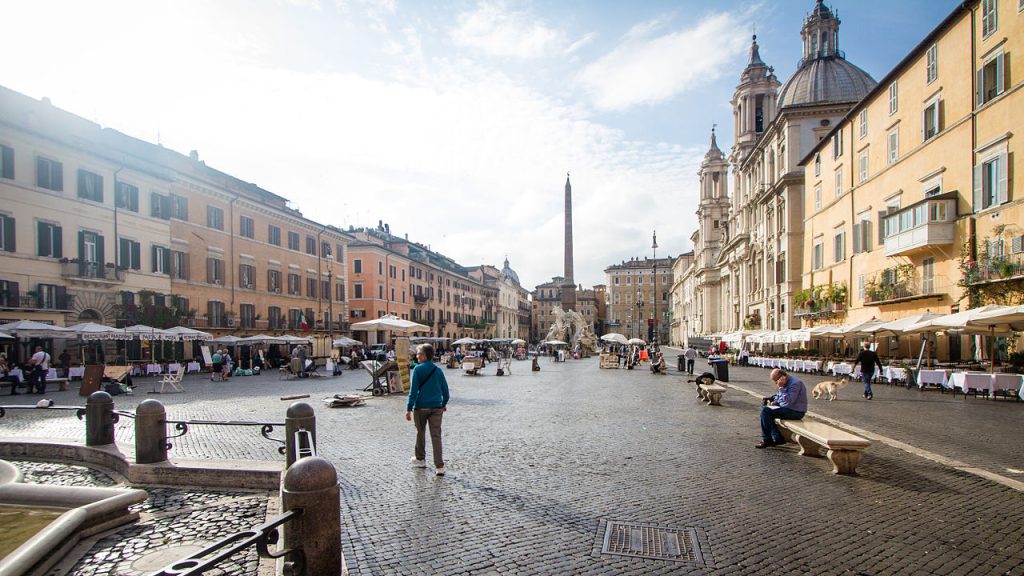
Piazza Navona is not only a monument of architecture and history, but also a Rome's culinary and artistic scene in the open air. Walking along the piazza, it's hard to resist the smells of Italian cuisine, street music and the ubiquitous art that permeates every moment here.
💠 Flavors of Rome on a plate
Around the square there are many stylish cafes, trattorias and restaurants, which serve both classic Italian dishes and dishes inspired by modern cuisine. Order cappuccino, tiramisu or carbonara overlooking the Fountain of the Four Rivers is an unforgettable experience that combines culinary pleasure with the aesthetics of the place. Prices are sometimes higher than in other neighborhoods, but The atmosphere and views definitely make up for it.
💠 Cafes with soul and history
Many of the establishments in Piazza Navona have their own histories, dating back decades, and some have been favorite meeting places for artists, intellectuals and tourists from around the world. The interiors often retain classic decor and Roman atmosphere, which is hard to find anywhere else.
💠 Street artists - the magic of the moment
The square is vibrant with the presence of painters, caricaturists, mimes, illusionists and musicians, who create the atmosphere of a unique performance. Performances often attract crowds and provide an opportunity for spontaneous interaction. You can order a portrait, admire improvised concerts Or simply sit back and observe the vibrant surroundings.
💠 Meeting culture in everyday life
It is a combination of flavors, art and architecture makes Piazza Navona stand out from other Roman squares. It is a place where everyday life becomes an event, and every meal or street performance is a small celebration of life.
8️⃣ Events and fairs - the magic of Christmas and summer evenings
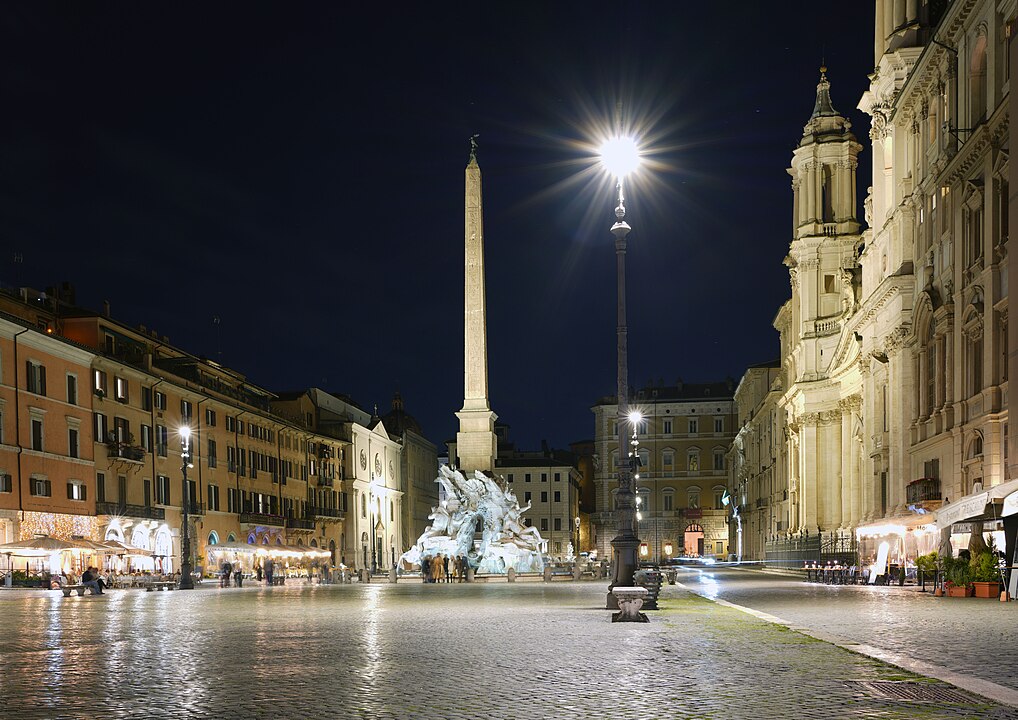
Piazza Navona is not only a place for daily walking - it is also a stage for cultural, religious and seasonal eventswhich further emphasize its unique character. Depending on the season, the square can change beyond recognition, while maintaining its unique charm.
💠 Christmas market - a Roman tradition
From late November to early January, Piazza Navona turns into a magical Christmas town. Colorful stalls, carousels, Christmas decorations and the smell of roasted nuts create a unique atmosphere. The youngest are waiting to meet the Befana - a character from Italian tradition, somewhat resembling our witch, who distributes gifts (or coals) to children.
💠 Summer concerts and performances
In the warmer months, the square becomes a space for concerts, theater shows and performances by street artists, often organized spontaneously or as part of municipal initiatives. Evenings with live music, lights and illuminated fountains attract both locals and tourists.
💠 Religious and state ceremonies
Because of its location and history, Piazza Navona often hosts a Processions, celebrations of church holidays and important national celebrations. The proximity of the Church of Sant'Agnese also makes many events have a spiritual dimension, especially on the day of remembrance of St. Agnes - the patron saint of the place.
💠 Life of the square all year round
Regardless of the season, Piazza Navona remains a place of celebration - Whether it's Christmas, a joyous summer, or just a particularly beautiful afternoon in Rome. The changing decorations, events and people make every day here a little different - and always worth remembering.
9️⃣ Curiosities and hidden symbols of the square - Piazza Navona from a different perspective
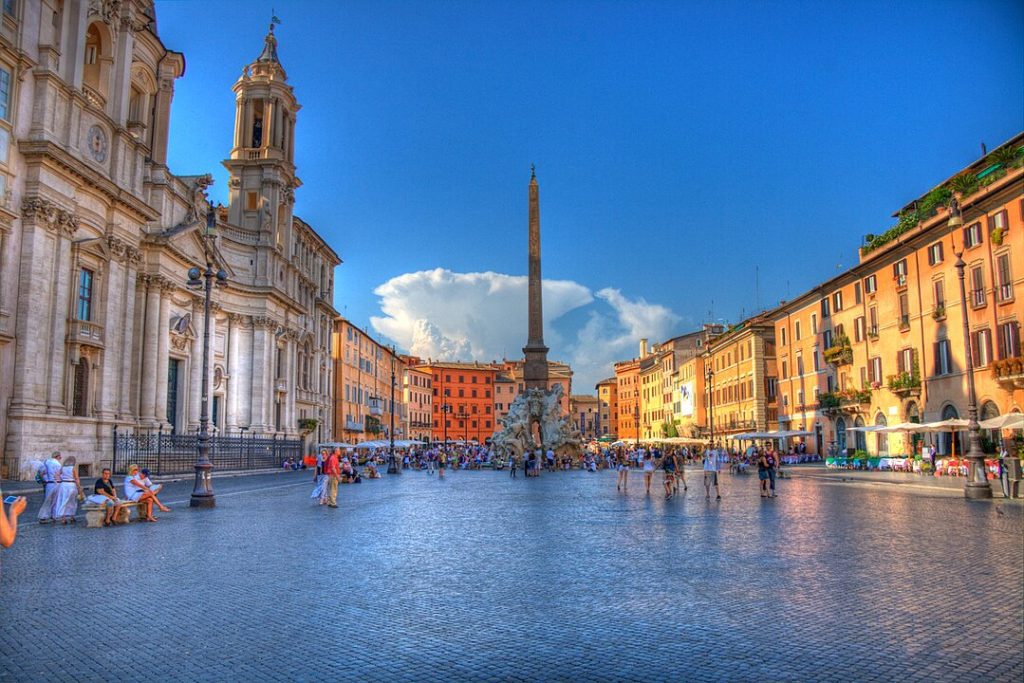
Piazza Navona is not only beautiful sights and monuments - it is also a place full of symbols, anecdotes and mysteriesThat escape a cursory tour. Each element of the square has its own history, and many of them hide deeper meanings, which are just waiting to be discovered.
💠 Hidden foundations of the stadium
Under the square there are still The remains of the ancient Stadium of Domitian, which can be seen during a visit to the underground museum (Stadio di Domiziano). The entrance to the exhibition is located at the northern end of the square - an ideal opportunity to literally get down to the foundations of history.
💠 Sculptures with a political message?
Legend has it that Rio de la Plata figure from the Fountain of the Four Rivers, turning away in horror from church of Sant'Agnese, was meant to symbolize Bernini's criticism of Borromini's design. In turn Nile figure with covered face allegedly "refuses to look" at the temple. Although this is more of a myth, it wonderfully captures the tensions between the two rivals of the Baroque.
💠 The name "in Agone" - why not "Navona"?
The name of the square comes from the Latin in agone - "in the arena" (i.e., the place of sporting struggles). Over time, the expression has become distorted into "Navona" in colloquial language. This is a fascinating example of how language and history live together.
💠 The hidden face of the fountain
If you get closer to the Maura Fountain, you will notice hidden faces and masks Among stones and shells. Baroque art liked to play with detail and symbolism - encouraging the viewer to discover hidden meanings. Some of the sculptural elements also had preserve the yard against "evil powers" according to the beliefs of the time.
💠 Roman house numbering
Pay attention to unusual numbering of buildings around the square - many of them have old plaques, sometimes with handwriting, still preserved from the 19th century. It's a small but charming detail that testifies to the continuity of the urban fabric Piazza Navona.
🔟 How to get to Piazza Navona - practical tips for visitors
Piazza Navona lies in the heart of Rome and is one of those places worth visiting not only for the monuments, but also for the due to climate and environment. Its location makes it easily accessible and a great starting point for further exploring the city.
💠 How to get there?
The square is not located directly next to metro stations, but walk from the metro "Spagna" (line A) or "Barberini" takes about 15-20 minutes. Both routes take you through the atmospheric streets of the historic center. There are also many buses running in the area. bus lines, which stop at Corso Vittorio Emanuele II, Ponte Umberto I whether at Largo di Torre Argentina.
💠 Ideal starting point
Thanks to its location, Piazza Navona is a great place to start a hiking trip around central Rome. Walking from here to other monuments - such as the Pantheon, Campo de' Fiori or the Castle of San Angelo - is a pleasure. The piazza itself also invites you to take a longer rest in one of the nearby cafes.
💠 Tip for tourists
To fully appreciate the atmosphere of Piazza Navona, it is worth visiting it at dawn or after darkwhen it's less crowded and the lights highlight the beauty of the Baroque architecture. If you plan to visit churches or attend events, be sure to appropriate attire - especially in sacred places.
1️⃣1️⃣ Summary - why Piazza Navona has delighted consistently for centuries
Piazza Navona is more than a monument - it the living heart of Rome, in which history, art and everyday life form a unique whole. From Domitian's stadium to Baroque masterpieces, every stage of its history still resonates here.
This is the place where the sacred meets the everyday: monumental architecture interacts with street performers, and the aroma of Italian coffee floats among Renaissance palaces.
Unique atmosphere, rich symbolism i authenticity of life They make Piazza Navona stay in the memory for a long time. Regardless of the time of day or year, each visit is unique - And always worth a return visit.

